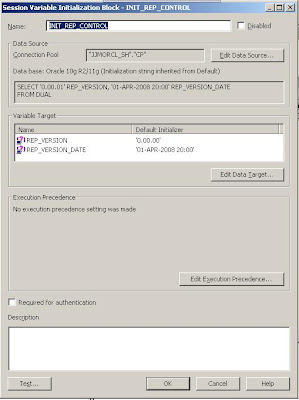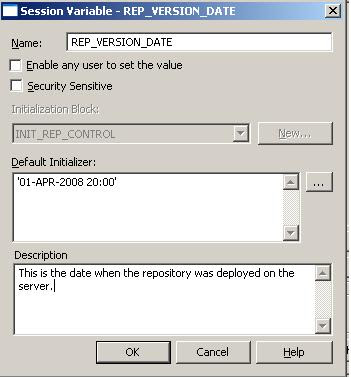It’s good practice to show to the user which version of the repository they are working on.
Since OBIEE doesn’t have a (automatic) version number you have to use a work around.
Here is one:
In the repository make a new session variable init block “INIT_REP_CONTROL”.

Set the datasource to:
SELECT '0.00.01' REP_VERSION, '01-APR-2008 20:00' REP_VERSION_DATE
FROM DUAL
Add the two session variables “REP_VERSION_DATE” and “REP_VERSION”


In Presentation area add a new subject area “Repository Version”:
To the description area add the text:
The current version of the repository is: VALUEOF(NQ_SESSION.REP_VERSION).
This version was brought to production on: VALUEOF(NQ_SESSION.REP_VERSION_DATE)

Add a dummy table and column, set the permissions to your HiddenColumns groups:


 Alter the SQL to:
Alter the SQL to:







 The executed query against 10G looks now like this:
The executed query against 10G looks now like this:

